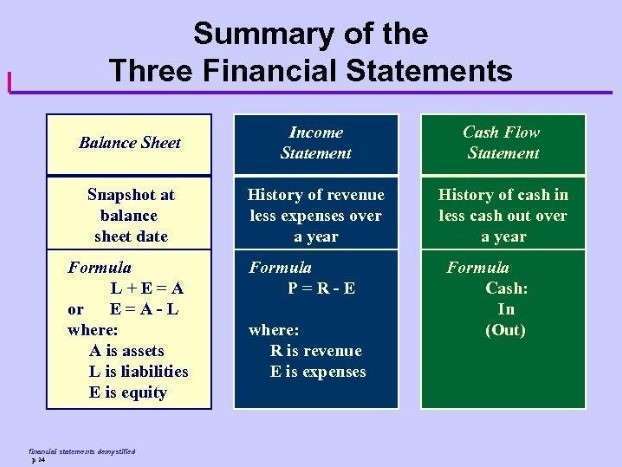By doing so, the junior accountant simultaneously shows a surge in corporate costs and debts. When the company pays its premiums, the bookkeeper credits the cash account and debits the insurance payable account. This entry brings the insurance payable account back to zero, therefore settling the debt. The accounting concepts of debit and credit run counter to the banking terminology. Factors such as the type of vehicle, the policyholder’s credit history, and the driver’s age, gender, and marital status can all affect the cost of an insurance premium. Insurance premiums are payments made for insurance policies and can cover healthcare, auto, home, and life insurance.
Property/Liability/Casualty Insurance

However, when allocating a variable cost, such as losses, an exposure-based method may not be appropriate. One location may contribute a large percentage of payroll; however, if that payroll is all clerical and/or salespersons, there may not be a large propensity for loss. Alternately, an adjustment to the exposures, to account for geography and job type, can be made and used as an option to allocate expected losses. Life insurance proceeds received by a business are typically tax-free, allowing companies to use the funds for expenses such as debt repayment or buy-sell agreements without incurring additional taxes. However, the transfer-for-value rule can trigger taxable income, so businesses must ensure compliance to maintain the tax-exempt status of these proceeds.
Ask Any Financial Question
It is a component of a corporate balance sheet, also known as a statement of financial condition or statement of financial position. Insurance payable shows retained earnings the amount of unpaid premiums that a policyholder must settle at a point in time, such as the end of a month, quarter or fiscal year. Insurance expense is a charge a business incurs to protect its operations against adverse commercial or life events. The company signs a contract with an insurance company and agrees to pay periodic premiums in return for risk protection. As a policyholder, the organization can select coverage for a vast array of events. These include protections in adverse situations related to auto, home and health.Prepaid insurance is usually considered a current asset, as it becomes converted to cash or used within a fairly short time.
- This can include various types of insurance, such as property, liability, workers’ compensation, and health insurance.
- Nominal accounts include revenues, expenses, capital drawings, and dividends.
- A performance-based methodology is more subjective than the loss- and exposure-based methods, but it may be effective in shaping the behavior of the business units.
- The amount of insurance expense that a company or individual pays depends on a number of factors, including the type of insurance, the amount of coverage, and the risk factors involved.
Meaning of Insurance Expenses:

Our solutions encompass insurance, financial services, healthcare, life sciences, and employee benefits. Founded in 1947, Milliman is an independent firm with offices in Partnership Accounting major cities around the globe. All claims for the past two to three years can be reviewed, a score can be assigned, and these scores can be averaged and totaled, allocating based on the percentage of total performance score.
Is insurance expense debit or credit?

Accurate reporting requires companies to list the policy as an asset and expense each portion paid throughout the policy’s lifetime. The insurance expense is, again, the monthly premium value expensed against the policy. As is insurance expense a debit or credit mentioned above, the premiums or payment is recorded in one accounting period, but the contract isn’t in effect until a future period. A prepaid expense is carried on an insurance company’s balance sheet as a current assetuntil it is consumed.
Sold Goods for Cash Journal Entry
If the claim is approved, the insurer will issue a payment to cover the cost of the loss or policy event. If the claim is denied, the claimant may need to take further steps to appeal the decision. In either case, it is important to keep detailed records of the claim to ensure that it is being handled properly. When shopping around for insurance, it is important to compare premiums from different companies and policies to find the best deal. It is also important to review the terms and conditions of each policy and make sure that the coverage is adequate for the policyholder’s needs. Failure to pay the premium may result in cancellation of the policy and loss of coverage.
- CFI is on a mission to enable anyone to be a great financial analyst and have a great career path.
- Insurance reimbursement is the process of reimbursement to healthcare providers for services provided to the insured.
- The amount paid is charged to expense in a period, reflecting the consumption of the insurance over a period of time.
- Again, anything that you pay for before using is considered a prepaid expense.
- So, if you originally put the repairs against a Repairs & Maintenance expense account, that is the account you will put the insurance proceeds against.
There is a need for the business units to directly relate the performance score to the metric being measured. It may be difficult for a business unit to have control over litigation, depending on the jurisdiction. Some allocation methodologies may inadvertently promote a suppression of claims reporting to improve the appearance of a business unit, which may lead to behavior counter to what is trying to be controlled. Figure 1 shows Business Unit A receiving 25% of the insurance cost allocation as it has 25% of the payroll.
General Liability Insurance
There would be no need for an insurance payable account if there were no insurance expense. The good news for companies about such types of insurance is that they can be deducted from tax liability as a business expense. However, most companies can deduct such expenses on their income tax forms in order to get a tax break. Milliman leverages deep expertise, actuarial rigor, and advanced technology to develop solutions for a world at risk.
- It is important to be aware of this potential consequence when filing a claim and to weigh the pros and cons of doing so.
- Chip Stapleton is a Series 7 and Series 66 license holder, CFA Level 1 exam holder, and currently holds a Life, Accident, and Health License in Indiana.
- It is calculated as a set percentage of the sum insured and is paid at a regular pre-specified period.
- Our writing and editorial staff are a team of experts holding advanced financial designations and have written for most major financial media publications.
- To record insurance expense and insurance payable transactions, corporate bookkeepers conform to specific norms.
What is your current financial priority?
This accounting treatment is required because of the matching principle, which calls for expenses to be recorded in the period that their benefit is received. A business spends $12,000 in advance for liability insurance coverage for the next twelve months. The company records this expenditure in the prepaid expense account as a current asset. In each of the next 12 successive months, the business charges $1,000 of this prepaid asset to expense, thereby equably spreading the expense recognition over the coverage period. Casualty insurance costs, including premium and retained losses, can represent a large percentage of a company’s overall insurance expenses. Risk management professionals may choose to allocate these costs down to the division, entity, or location level; however, finding the ideal allocation can be tricky.
